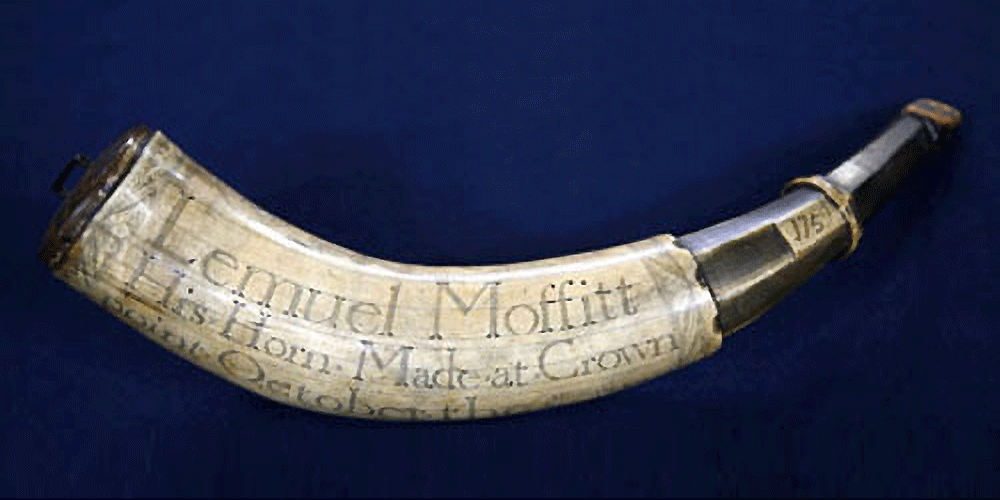Engraved powder horns are simply fascinating. Particularly those with detailed historical maps. They are truly a piece of art and the work of incredible craftsmen.
I discovered them by pure chance and got interested in them because they often feature maps from the region of Lake Champlain, the region where I live and which I research.
Why? Because it seems that one of the professional engravers of those maps was located in the British fort of Crown Point, on Lake Champlain. And a number of maps show the whole region from Lake Champlain to Albany usually, with a large British crest.
Let me share with you some of the things I learned, and some of the treasures I found.
First, the Antiques Roadshow has featured some of those horns. And they do a fantastic job with their online archives, which include both the video of the segment and the full written transcript of the conversation!
This first one “1759 French and Indian War Powder Horn” (you can search their appraisal archives) is actually what started my interest in the subject. One night I was watching the Antiques Roadshow as usual and heard the word “Crown Point”. That immediately caught my interest! This particular horn is engraved with the name Crown Point and the date of October 1759 and seems to have a representation of Fort Ticonderoga.
Well… it was in the fall of 1759 that the British started the construction of their fort at Crown Point, on Lake Champlain, right on the site where the French had abandoned their fort, Fort Saint-Frédéric, during the summer.
And Fort Ticonderoga – mentioned by the appraiser – is in fact Fort Carillon, another French fort, located about 20 miles south of Crown Point, built according to the military architectural principles of Vauban, which was abandoned by the French and occupied by the British in July 1759. Also engraved is the name of the soldier who owned it.
My readings have taught me that it was actually mandatory for British soldiers to engrave their name on their powder horn so that they would know which one is theirs. And it says “his horn”, which a lot of horns say.
And last by not least, this particular horn has something very special about it. It said, “success to the British Arms” but the word “British” has been erased, which surely means that the horn was then owned by an American during the American Revolution.
I have much more to tell you about engraved powder horns. This is truly just the first chapter on the subject!


Hello, Christine –
I’m delighted to have tumbled on to your blog — particularly to discover your interest in powder horns! I’m currently curating an exhibition of the work of Rufus Grider, the first to have formalized an interest in their historic and artistic merit, back in the 1880s-90s (he’s mentioned in the article by Gramcsey [sp?] you reposted, which is how I found you).
There will be 16 of Grider’s horns, with their complete stories, on display over the course of the run — 8 at a time, since they are watercolors, and light sensitive. Most are from the astonishing collection of the New-York Historical Society in Manhattan, and they have NEVER been exhibited before. Hope you can come visit — and I’d be glad to tell you what else I know about the subjects the 500 horn drawings (!) he made.
Best wishes, Alice
Drawn to the Same Place:
Fritz Vogt and Rufus Grider
April 1 – August 14, 2010
opening reception April 9
http://www.ArkellMuseum.org — see upcoming exhibitions
Hello Christine,
I happily came upon your site as I am a member of the Honorable Company of Horners and recreate powder horns from the French and Indian Campaign. Your color plates are fantastic and I would love to be able to see more detail in order to replicate the designs on the horns. Can you share your source in more detail. Thank you so much for posting these pictures!
Carl
Hello Carl,
I have now changed the link to the NY Historical Society in the article Engraved Power Horns – Part 4. They had changed their website and that is the reason why this link was not working anymore.